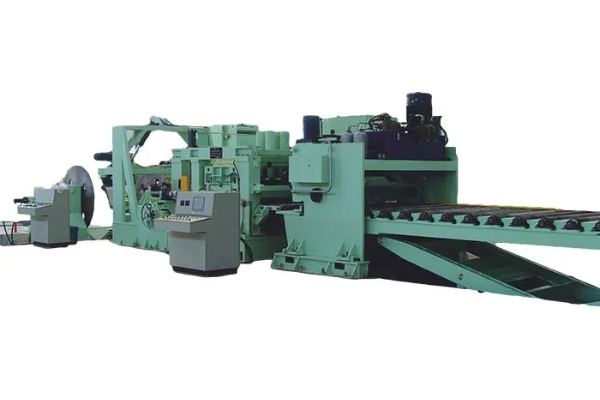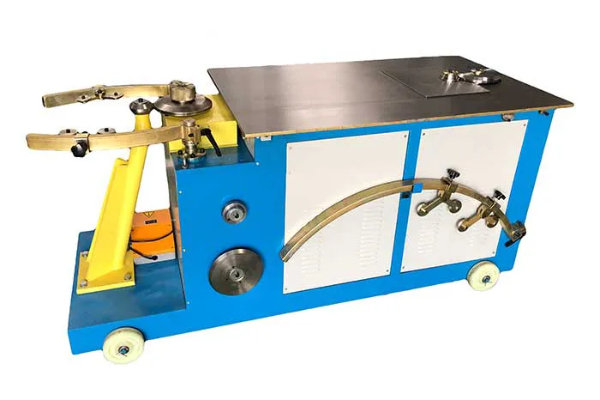
How to Troubleshoot Common Issues with Profile Roll Forming Machines
- By:Metmac
- 2024-06-12
- 153
Profile roll forming machines are essential equipment in the manufacturing industry, used to create various shapes and profiles from metal sheets. While these machines are generally reliable, they can occasionally experience issues that can affect their productivity and output quality. Understanding how to troubleshoot these common issues is crucial for maintaining optimal machine performance.
Mechanical Issues
– Misaligned Rolls: Misalignment of the forming rolls can cause uneven forming and poor-quality profiles. Check for proper adjustment of the roll stands and bearings, and ensure that the rolls are parallel to each other.
– Worn Rollers: Worn or damaged rollers can lead to inconsistent forming and surface defects on the profiles. Inspect the rollers regularly for wear and replace them when necessary.
– Unlubricated Gears and Bearings: Lack of lubrication can cause premature wear and tear of gears and bearings, leading to increased friction and reduced efficiency. Regularly lubricate all moving parts according to the manufacturer’s recommendations.
Material-Related Issues
– Incorrect Material Thickness: Using material with an incorrect thickness can affect the forming process and result in improper profiles. Ensure that the material used matches the specified thickness for the desired profile.
– Material Defects: Material defects, such as cracks or inclusions, can cause tearing or damage during forming. Inspect the material before feeding it into the machine.
– Insufficient Material Lubrication: Poor lubrication of the material can lead to friction and surface damage during the forming process. Apply an appropriate lubricant to the material before rolling.
Electrical Issues
– Electrical Faults: Short circuits, loose connections, or power fluctuations can cause electrical faults that disrupt machine operation. Inspect the electrical system for any loose wires or damaged components, and ensure that the power supply is stable.
– Control Panel Malfunctions: The control panel monitors and controls the machine’s operations. A malfunctioning control panel can lead to incorrect settings or errors in the forming process. Check the control panel for any error messages or abnormal operation.
Other Issues
– Overloading: Overloading the machine by feeding too much material can cause excessive strain on the rollers and other components, leading to mechanical failures. Follow the manufacturer’s specified loading limits.
– Improper Setup: Incorrect setup of the machine, such as improper roll spacing or tension settings, can result in poor-quality profiles. Review the setup instructions carefully and ensure that all settings are adjusted as per the specified tolerances.
– Lack of Maintenance: Regular maintenance is essential for keeping the machine in optimal condition. Failure to perform routine maintenance, such as cleaning, lubrication, and inspections, can increase the likelihood of issues and breakdowns.
-
Sheet Metal Rolling Machine for Sale: Finding Precision and Durability with METMAC
2025/12/09 -
Press Brake Bending Machine: Engineering Precision with METMAC
2025/12/09 -
CNC Sheet Bending Machine: Precision Redefined with METMAC
2025/12/09 -
Sheet Metal Roll Forming Machines: The Precision of METMAC Engineering
2025/12/09
-
Advanced Sheet Metal Rolling, Laser Cutting, and Folding Machines for Precision Fabrication
2025/10/31 -
High-Performance Sheet Metal Bending and Cutting Machines for Modern Fabrication
2025/10/31 -
High-Quality Sheet Metal Equipment for Sale: Efficient Solutions for Modern Manufacturing
2025/10/31 -
High-Performance Sheet Metal Equipment for Sale: Forming and Shearing Solutions for Modern Fabrication
2025/10/22
-
A Guide to the Latest Innovations in Sheet Metal Folding Machines
2024/11/29 -
Key Features to Consider When Investing in a Sheet Metal Folding Machine
2024/11/28 -
Enhancing Precision with Advanced Sheet Metal Folding Machines
2024/11/27 -
How to Choose the Right Sheet Metal Folding Machine for Your Workshop
2024/11/26







